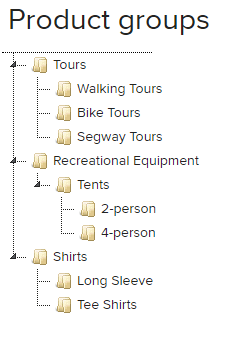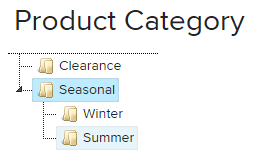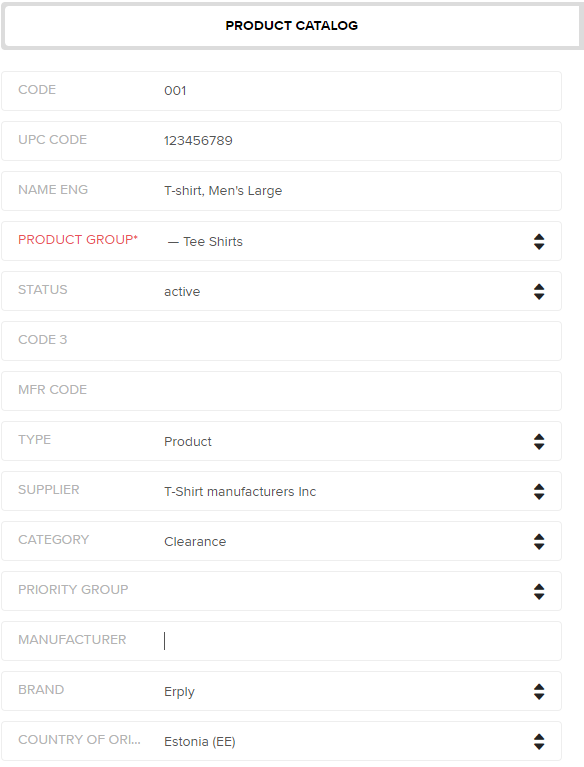Even if you’re a small business owner who puts in 70-hour work weeks, you still have to make time for proper inventory management and product categorization. Small details in inventory records can make big differences, and how you store and organize your physical goods can be the difference between success and failure.
Here are our top tricks for maximizing profit by better managing inventory.
Set Up Your Inventory Software With Care
You know the old saying in software, “garbage in, garbage out
?” It essentially means that even the best software will produce a negligible benefit if you provide it poor data. Remember this when you’re using a tool that you’ve made a significant investment in.
So, the key is in thinking about the different ways you could organize your products. What numbers do you want to report on? If you carry different brands, do you want to see which ones sell better? You can’t do it unless you tell the system there are different brands.
Do some product groups sell really well, like novelty keychains? Do you have groups of products that perform better seasonally, or that you might retire from the shelves during certain months -- winter clothing for example. If your inventory management software allows, then you might want to set up groups with those categories so you can manage them and track sales information.
Are some of your products taxed differently, like luxury goods or food? You’ll want to put those in respective categories.
Managing inventory in such a way will help you to see what’s selling, as well as what might be good to add to your catalog. If you discover that you’re selling a lot of widgets in blue and green, maybe you need to start selling red widgets as well. If you sell a lot of widgets for women but not for men, is there a way to improve sales of men’s widgets, or should you stop selling them and assign that shelf space to something better?
Ultimately it’s a matter of discipline, taking the time to develop good behavior, to create and maintain a system that helps you to make smart decisions about your product line and purchasing habits.
It’s one thing, for example, to identify your top 10 best sellers. But what if 8 out of 10 are in the same group? That might tell you to expand the group with additional items. If most of your worst selling items are in the same group, maybe you stop buying that kind of item. This can help you decrease your inventory load, which then increases your working capital and frees you to make better choices about new stock to invest in.
You might discover that some best sellers change seasonally, even though you hadn’t thought of them previously as seasonal items. That in turn might inspire you to set up pricing and promotions accordingly.

Product Groups in Erply help you organize items, especially in terms of how they appear in the POS.

Product Categories provide behind-the-scenes information, configurable to however you want to track things.

Combining groups and categories, along with other product metadata, provides you with more ways to filter your reports and evaluate your products and services. Literally every point of data is a way to measure effectiveness. Which suppliers, which brands, which groups, which categories?
In the Store: Isolate Your Top Sellers
Do you have some products that fly off the shelves at a certain time of the year? What about top-sellers, or the products people come to you for year-round? How you group items together, and how you manage these groups is the key to product organization.It’s a common notion that 20 percent of your sales or services will bring you 80 percent of your revenue. The 20 percent of your products that make up the bulk of your revenue can be put together in a “top sellers” category.
When you organize your top-selling products together, you’ll have an easier time keeping track of inventory and accessing them when you need to restock.
Your top sellers should be kept together at the location you sell them from, if possible. Keep the products out of the way, but still within easy access so that you don’t have to work too hard to get new stock out for the floor. Top sellers are quick moving merchandise, so having them ready to go is important.
Group Your Other Products Broadly
For all remaining products, think of these items in terms of larger groups of related items. For example, if yours is a clothing store, you’ll probably keep women’s accessories in a separate area from women’s shirts. Avoid getting too granular with your organization, however. Larger groups of items are easier to browse through, and well-labelled storage can make them even easier. If you store items in boxes, don’t simply close up the box and put it on the shelf. Take the time to properly label and record your inventory in your inventory management system.
Warehouse Organization
So you’ve picked out an inventory management system, and you’ve got your top sellers grouped together. You’ve also grouped the rest of your product into broad categories that are easy to identify. But what about putting it all into your warehouse, home, or self-storage unit?Before you organize your warehouse, or put everything in if it’s a new space, consider sorting your products by another attribute -- their demand.
Determine how well each of your products sells
, and create an ordered list sorted by the demand. Here’s an example:
| Product Name | Units Sold |
| Yellow sports backpack | 17 |
| Electronic wristband wearable | 12 |
| Plain running shorts | 8 |
Organizing your warehouse in this way ensures quick access to the items you go to the warehouse to get most often. As with your groups and your inventory management system, it’s crucial that you use good labeling practices for easy identification.
Your Complete Product Organization
Don’t let poor inventory management hurt your business growth. Remember these tenets:
Get inventory management software.
Look for a cloud-based provider who offers front- and back-end integration, so your business has the ability to scale up.
Put top-sellers together.
Your top sellers should be stored on location if possible.
Use broad categories for grouping all other products
. By using broad categories to define your products, you can easily sort them into their respective places in your warehouse.